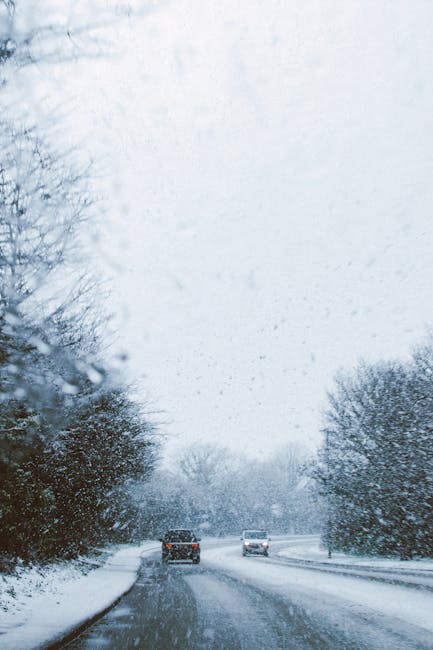
The Deadliest Roads in the World and How to Stay Safe
The Deadliest Roads in the World and How to Stay Safe
Driving can be a thrilling experience, offering freedom and adventure. However, some roads around the world are notorious for their extreme danger, claiming countless lives each year. Whether due to treacherous terrain, unpredictable weather, or reckless driving conditions, these routes test even the most skilled motorists.
In this article, we will explore some of the deadliest roads in the world, examining what makes them so hazardous. More importantly, we will provide essential safety tips to help travelers navigate these perilous paths—or, in some cases, avoid them altogether.
1. The North Yungas Road (Bolivia) – “The Death Road”
Why It’s Dangerous:
Nicknamed “El Camino de la Muerte” (The Death Road), this 43-mile stretch in Bolivia is infamous for its narrow, unpaved lanes, sheer cliffs, and lack of guardrails. With steep drops of up to 2,000 feet, a single mistake can be fatal. Heavy fog, landslides, and reckless overtaking add to the risks.
Safety Tips:
- Drive slowly and stay on the inside lane.
- Avoid driving at night or during heavy rain.
- If cycling (a popular activity here), use a reputable tour company with safety gear.
2. The Guoliang Tunnel Road (China)
Why It’s Dangerous:
Carved into the side of a mountain by villagers in the 1970s, this tunnel is barely wide enough for two vehicles. Low ceilings, sharp turns, and uneven surfaces make it a nightmare for inexperienced drivers.
Safety Tips:
- Drive at a crawl—speed is your enemy here.
- Use your horn before blind corners to alert oncoming traffic.
- Avoid large vehicles; this road is best for small cars.
3. James Dalton Highway (Alaska, USA)
Why It’s Dangerous:
Stretching 414 miles through remote Alaskan wilderness, this road is plagued by extreme cold, ice, and long stretches without services. Blizzards can reduce visibility to zero, and breakdowns can be deadly due to the lack of help.
Safety Tips:
- Carry extra fuel, food, and emergency supplies.
- Use a reliable 4×4 vehicle with winter tires.
- Travel in daylight and check weather forecasts before departure.
4. The Zoji Pass (India)
Why It’s Dangerous:
Located in the Himalayas, this high-altitude road is prone to avalanches, landslides, and sudden snowstorms. The narrow, crumbling edges and lack of barriers make it one of India’s most treacherous routes.
Safety Tips:
- Travel only in summer when conditions are slightly better.
- Hire an experienced local driver familiar with the terrain.
- Avoid stopping on unstable sections of the road.
5. The Trans-Siberian Highway (Russia)
Why It’s Dangerous:
Spanning over 6,800 miles, this route crosses some of the harshest environments on Earth. Poor road conditions, extreme cold, and long distances between towns make breakdowns a serious hazard.
Safety Tips:
- Ensure your vehicle is in top condition before the journey.
- Carry spare parts, warm clothing, and emergency rations.
- Stick to well-traveled sections and avoid driving alone.
6. The Karakoram Highway (Pakistan-China)
Why It’s Dangerous:
Connecting Pakistan and China through the world’s highest mountain ranges, this highway is prone to rockfalls, landslides, and altitude sickness. The steep drops and lack of guardrails add to the peril.
Safety Tips:
- Acclimate to high altitudes before driving.
- Avoid traveling during monsoon season.
- Drive cautiously and be prepared for sudden road closures.
7. The BR-116 (Brazil) – “Highway of Death”
Why It’s Dangerous:
This Brazilian highway is notorious for fatal accidents caused by poor maintenance, reckless driving, and criminal activity. Heavy truck traffic and sharp curves contribute to the danger.
Safety Tips:
- Avoid driving at night due to increased crime risks.
- Stay alert for aggressive drivers and large trucks.
- Keep doors locked and be cautious at rest stops.
General Safety Tips for Dangerous Roads
While each of these roads presents unique challenges, some universal safety measures can help reduce risks:
- Vehicle Preparation – Ensure brakes, tires, and lights are in top condition.
- Weather Awareness – Avoid driving in storms, heavy fog, or extreme cold.
- Defensive Driving – Stay alert, avoid speeding, and anticipate hazards.
- Emergency Kit – Carry water, food, a first-aid kit, and communication devices.
- Local Knowledge – When possible, hire a guide or driver familiar with the route.
Conclusion
The world’s deadliest roads are not for the faint-hearted. While some offer breathtaking views, the risks they pose are very real. By understanding these dangers and following safety precautions, travelers can minimize risks—or choose safer alternatives.
Whether you’re an adventurous road tripper or simply curious about extreme travel, always prioritize safety over thrill. After all, the best journeys are those where you return home safely.
Would you dare to drive on any of these roads? Share your thoughts in the comments!







